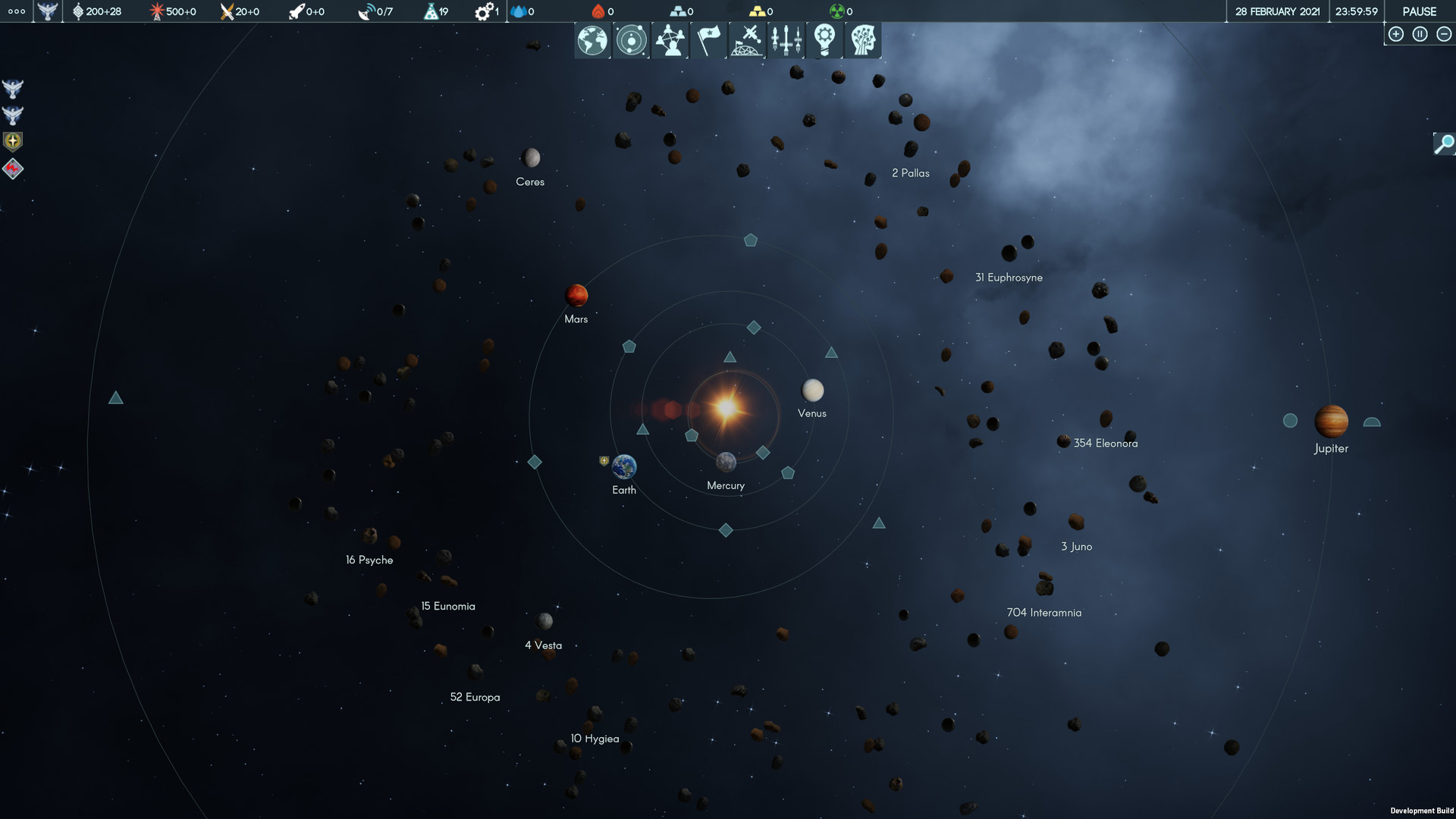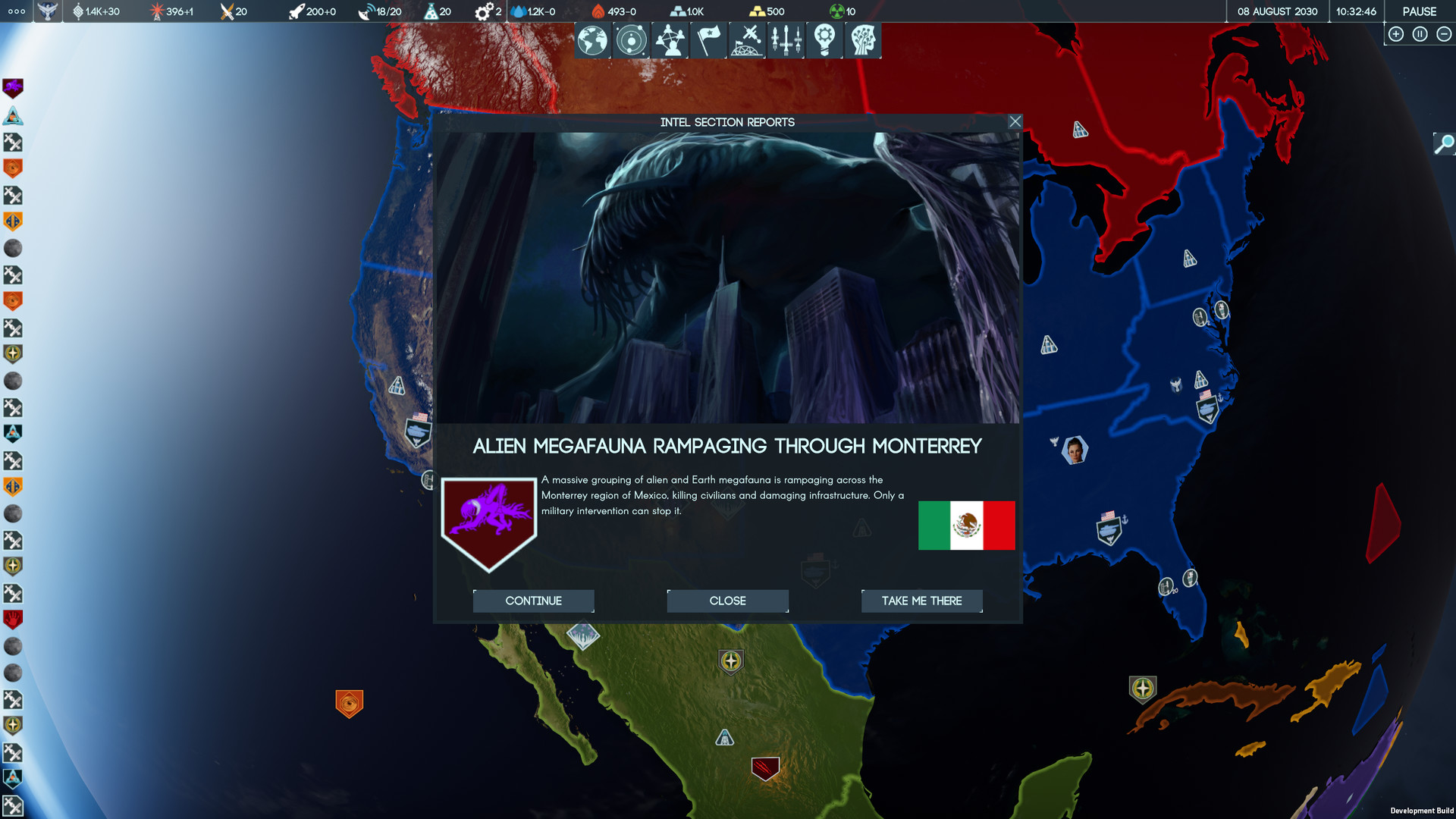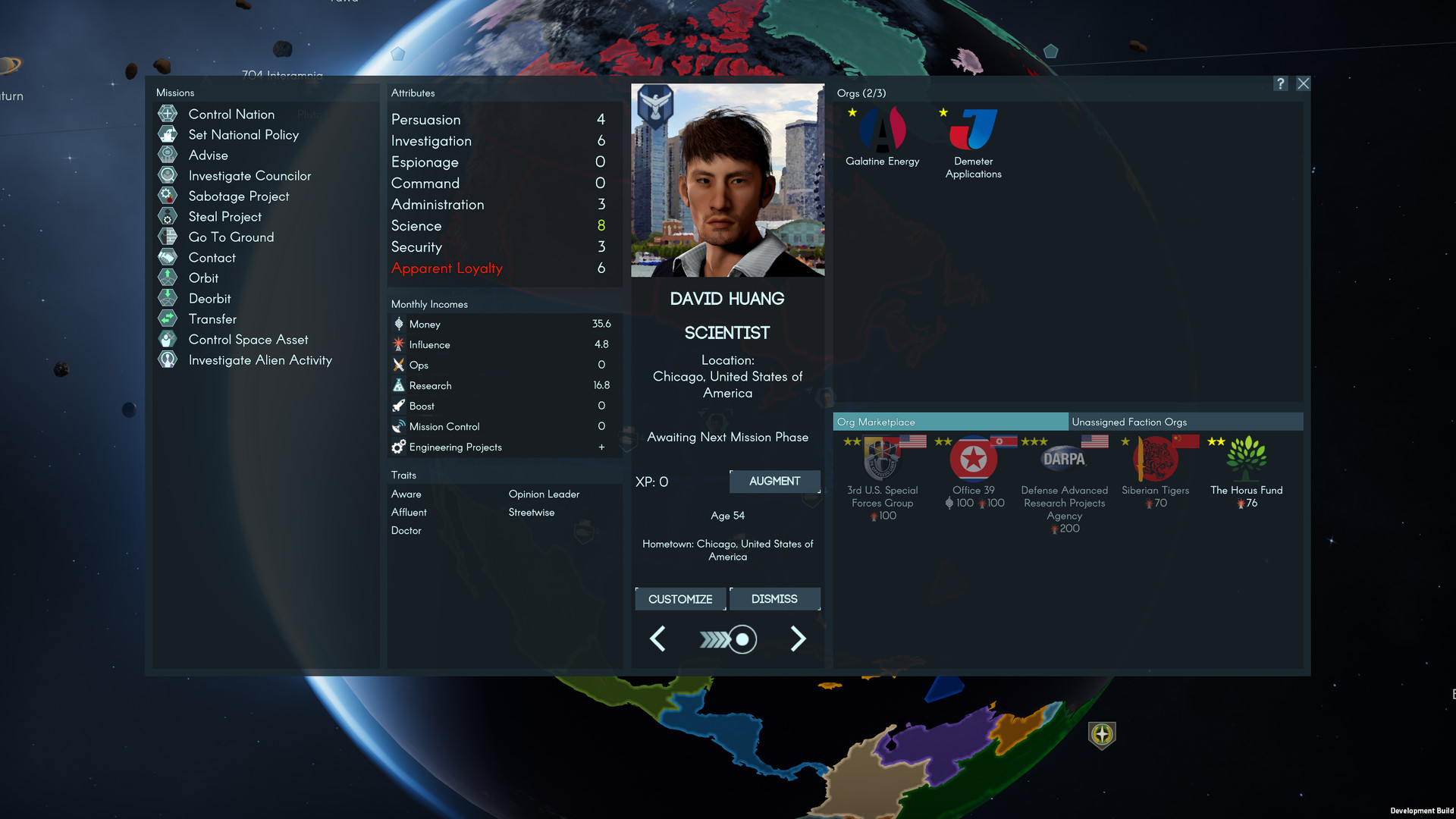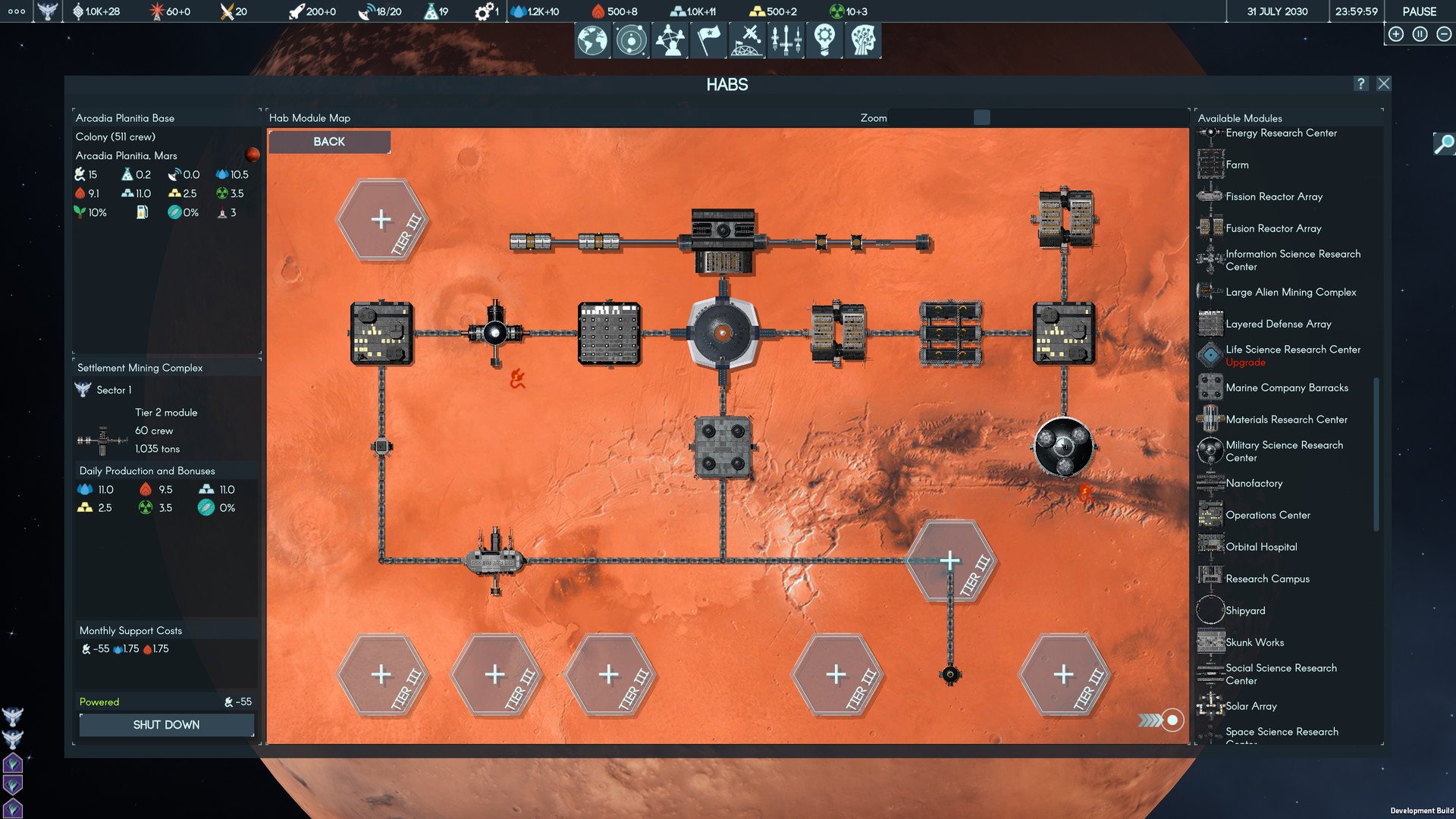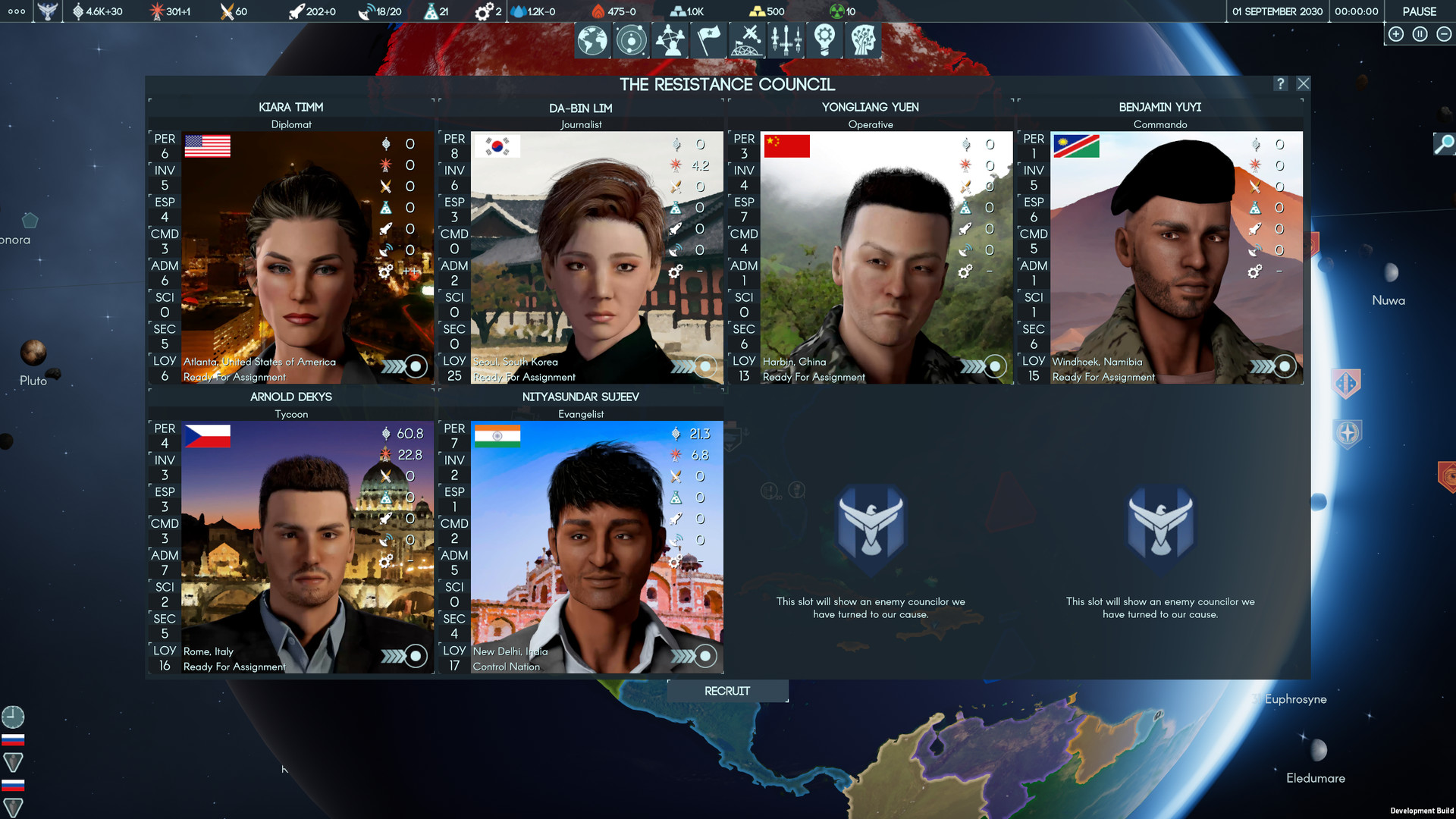-
Welcome to rpgcodex.net, a site dedicated to discussing computer based role-playing games in a free and open fashion. We're less strict than other forums, but please refer to the rules.
"This message is awaiting moderator approval": All new users must pass through our moderation queue before they will be able to post normally. Until your account has "passed" your posts will only be visible to yourself (and moderators) until they are approved. Give us a week to get around to approving / deleting / ignoring your mundane opinion on crap before hassling us about it. Once you have passed the moderation period (think of it as a test), you will be able to post normally, just like all the other retards.
You are using an out of date browser. It may not display this or other websites correctly.
You should upgrade or use an alternative browser.
You should upgrade or use an alternative browser.
KickStarter Terra Invicta - sci-fi grand strategy from Long War mod creators - now available on Early Access
- Thread starter Infinitron
- Start date
PanteraNera
Arcane
- Joined
- Nov 7, 2014
- Messages
- 1,024
agreed, meh!
Well, at least it's not Long War: The Standalone Game.

You say that as if it would have been a bad thing.Well, at least it's not Long War: The Standalone Game.
You say that as if it would have been a good thing.You say that as if it would have been a bad thing.Well, at least it's not Long War: The Standalone Game.
Space Satan
Arcane

DD: Factions
As noted previously, the 'players' (human and AI) in the game are called "factions." The human factions are defined by their ideologies in dealing with the aliens. This dev diary will explore the factions and describe a bit of what they do.
(One of the challenges we are finding in discussing development, even internally, is what we mean when we say "human" -- that is, do we mean the flesh-and-blood human player as distinguished from the AI, or the seven human factions as opposed to the alien faction. So I'll try to keep those straight.)
We designed these factions around the range of relevant human reactions we could come up with to the arrival of a potentially hostile alien species in the Solar System. Each faction will have a name, which can vary between campaigns. Here I'll simply define them by their ideology. In game terms, the factions have distinct victory conditions -- which aren't always mutually exclusive.
RESIST -- The Resist faction, which is the default faction for the human player, sees the aliens as a threat to human autonomy. They are prepared to fight to preserve it.
DESTROY -- The Destroy faction responds to the alien arrival with xenophobia. They want not just to defeat the aliens, but to wipe them out entirely, along with any humans who work with them.
APPEASE -- Supporters of this faction acknowledge the aliens' technological superiority and believe that any resistance is doomed to fail, at a potentially huge cost to the human race. They hope to maintain a measure of human independence through granting concessions to whatever the aliens demand.
COOPERATE -- This optimistic faction believes the aliens can ultimately be persuaded to establish peaceful trade and an exchange of ideas, if only Earth can unite and speak with one voice.
SUBMIT -- This faction regards the aliens as superior beings in every facet and wishes for them to conquer Earth. They will support the aliens at every opportunity.
ESCAPE -- This faction believes the aliens will eventually enslave or destroy humanity and intends to build interstellar generation ships to flee the Solar System in an attempt to save the species. They will attempt to direct Earth’s resources away from resistance and toward this outcome.
EXPLOIT -- This faction sees opportunity instead of danger in the aliens’ arrival, and its leaders seek to enrich themselves and gain positions of power around the world, perhaps by taking the aliens' tools as their own. Many of their "supporters" have been persuaded the aliens are a hoax.
And finally, the aliens themselves form the eighth faction in the game.
How to factions work?
Players in most grand strategy / 4x games lead independent polities -- a nation, a unified planet or empire. In Terra Invicta, we're starting with the assumption that existing human institutions cannot work together to address the alien arrival in any meaningful way without a guiding ideology that is provided by the (human and AI) players. These players will seek to invest in and control various nations and other institutions, which have key resources needed for the factions to achieve their objectives.
As mentioned previously, players have four primary tools in the game. They are:
* Their faction council. This is a group of up to six or eight (TBD) leaders who interact with nations, various faction assets and each other. They are the primary means to gaining control of some or all of Earth's nations. More on councilors in a future post, but they are your primary proxies in the world, and can be developed like characters in other games.
* Armies. Armies represent multiple modern divisions that are capable of gaining and holding territory in other nations. Control of an army is gained after councilors gain at least partial control of a nation. Most nations don't have armies (but nations can build new ones with sufficient investment); their armied forces are abstracted as local defense forces. While powerful, armies are still subject to the international relations of their home countries (which too can be managed with sufficient control of a nation). Some armies have a "Navy" upgrade that allows them to transit oceans.
* Habs. Habs, or "Habitats," are off-Earth space stations and bases on planets and asteroids. These may offer places to mine resources for construction, research advanced technologies, and provide defensive strongpoints. Once you get an industrial base in space going, it's far, far easier to do things relative to boosting all your resources up Earth's gravity well.
* Warships. One of the main reasons to build habs is to build these, as the aliens can't be stopped just by fighting them on Earth.
In a future post, we'll detail the various resources councils must manage.
(One of the challenges we are finding in discussing development, even internally, is what we mean when we say "human" -- that is, do we mean the flesh-and-blood human player as distinguished from the AI, or the seven human factions as opposed to the alien faction. So I'll try to keep those straight.)
We designed these factions around the range of relevant human reactions we could come up with to the arrival of a potentially hostile alien species in the Solar System. Each faction will have a name, which can vary between campaigns. Here I'll simply define them by their ideology. In game terms, the factions have distinct victory conditions -- which aren't always mutually exclusive.
RESIST -- The Resist faction, which is the default faction for the human player, sees the aliens as a threat to human autonomy. They are prepared to fight to preserve it.
DESTROY -- The Destroy faction responds to the alien arrival with xenophobia. They want not just to defeat the aliens, but to wipe them out entirely, along with any humans who work with them.
APPEASE -- Supporters of this faction acknowledge the aliens' technological superiority and believe that any resistance is doomed to fail, at a potentially huge cost to the human race. They hope to maintain a measure of human independence through granting concessions to whatever the aliens demand.
COOPERATE -- This optimistic faction believes the aliens can ultimately be persuaded to establish peaceful trade and an exchange of ideas, if only Earth can unite and speak with one voice.
SUBMIT -- This faction regards the aliens as superior beings in every facet and wishes for them to conquer Earth. They will support the aliens at every opportunity.
ESCAPE -- This faction believes the aliens will eventually enslave or destroy humanity and intends to build interstellar generation ships to flee the Solar System in an attempt to save the species. They will attempt to direct Earth’s resources away from resistance and toward this outcome.
EXPLOIT -- This faction sees opportunity instead of danger in the aliens’ arrival, and its leaders seek to enrich themselves and gain positions of power around the world, perhaps by taking the aliens' tools as their own. Many of their "supporters" have been persuaded the aliens are a hoax.
And finally, the aliens themselves form the eighth faction in the game.
How to factions work?
Players in most grand strategy / 4x games lead independent polities -- a nation, a unified planet or empire. In Terra Invicta, we're starting with the assumption that existing human institutions cannot work together to address the alien arrival in any meaningful way without a guiding ideology that is provided by the (human and AI) players. These players will seek to invest in and control various nations and other institutions, which have key resources needed for the factions to achieve their objectives.
As mentioned previously, players have four primary tools in the game. They are:
* Their faction council. This is a group of up to six or eight (TBD) leaders who interact with nations, various faction assets and each other. They are the primary means to gaining control of some or all of Earth's nations. More on councilors in a future post, but they are your primary proxies in the world, and can be developed like characters in other games.
* Armies. Armies represent multiple modern divisions that are capable of gaining and holding territory in other nations. Control of an army is gained after councilors gain at least partial control of a nation. Most nations don't have armies (but nations can build new ones with sufficient investment); their armied forces are abstracted as local defense forces. While powerful, armies are still subject to the international relations of their home countries (which too can be managed with sufficient control of a nation). Some armies have a "Navy" upgrade that allows them to transit oceans.
* Habs. Habs, or "Habitats," are off-Earth space stations and bases on planets and asteroids. These may offer places to mine resources for construction, research advanced technologies, and provide defensive strongpoints. Once you get an industrial base in space going, it's far, far easier to do things relative to boosting all your resources up Earth's gravity well.
* Warships. One of the main reasons to build habs is to build these, as the aliens can't be stopped just by fighting them on Earth.
In a future post, we'll detail the various resources councils must manage.
Sranchammer
Arcane

Where the updates at, B?
Perkel
Arcane
- Joined
- Mar 28, 2014
- Messages
- 15,875
Not sure. LW only made cosmetic changes. LW only polished a turd, they didn't bring in any really big changes.
You sir you never played LW if you think that way. LW completely changed how Xcom is played.
It is like saying you take 24 cards to play fool and you make out of it poker and you say only cosmetic changes were made or something.
ArchAngel
Arcane
- Joined
- Mar 16, 2015
- Messages
- 20,066
No it didn't. LW1 made it so you overwatch like crazy which was already too used tactic in Xcom1 vanilla. It changed nothing about real problems of Xcom 1 (pods, lack of inventory and the rest).Not sure. LW only made cosmetic changes. LW only polished a turd, they didn't bring in any really big changes.
You sir you never played LW if you think that way. LW completely changed how Xcom is played.
It is like saying you take 24 cards to play fool and you make out of it poker and you say only cosmetic changes were made or something.
LW2 changed things a bit (mostly by removing irritating end mission timer and replacing them with enemy reinforcement timers) but still didn't little to fix base problems with nuXcoms.
Space Satan
Arcane

DD: Nations 1
Nations on Earth are an important game element that serve as battlegrounds for the alien invaders’ designs on Earth. They are sites of both political and military conflict. Human factions, including the player, will complete to control nations in order to make use of their resources to fulfill their objectives.
Your councilors are your primary asset for political influence and espionage. Acquiring sufficient control in a nation will grant you access to any armies for use in conventional warfare.
As mentioned in a previous post, a nation typically represents a single Earth country, although in several cases we have combined several countries into a single nation so they can have more relevance to the scale of the game. Examples of these are Central America and the Caribbean being two nations instead of two dozen; we’re not asserting they are unified in any real sense, just that any inter-nation issues exist below the scale of the simulation. Players function as something like in investors in nations, and with enough focus you can take significant control over its future.
This and the following Dev Diary are going to be mechanics and simulation heavy, with less time spent on player interaction with it. More on player-related mechanisms in the future.
Summary:
Use your councilors to gain partial or eventually total control of nations. Gain money, research, boost, mission control, and armies and the ability to make war on other nations. Set the nation’s priorities to give you more of those resources.
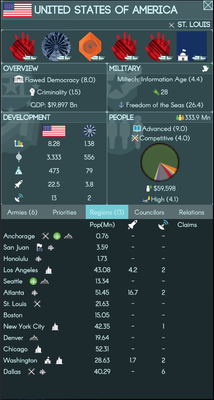
Exhaustive Detail:
Nations are composed of one or more Regions. Regions are named for the primary city in it. The function of regions is primarily geographical, not political; they exist to mark the locations of critical assets and armies. When new nations form or existing ones change, they are composed of regions from other nations. Regions in particular are home to space facilities: launch facilities that provide boost; mission control facilities, and later in the game, surface-to-orbit defenses. Some nations have claims on regions that aren’t theirs; these are the regions they may acquire through warfare or secession movements. Armies can control regions, but councilors do not -- they work at the national level.
The UI image attached to this post shows the list of regions in the United States. “St. Louis” is shown at the top because that region was selected by the player in the Geoscape.
The game elements representing political control of nations are called Control Points. These represent key nodes of political, economic and military control over a nation. Each nation has between one and six control points; the number corresponds with the size of the nation’s economy. (The exact formula involves the fourth root of the GDP PPP in billions and some other math.) Initially all control points are "neutral" -- they are the nation's existing set of leaders fumbling about without any coherent policy toward the aliens.
At the campaign’s start, the United States, China and the European Union have six control points; India has five control points; Mexico, the United Kingdom, Brazil, Indonesia, Russia and Japan have four. Other nations have three, two or one.
Remember your factions function as something like secret cabals; control points are acquired for factions by councilor missions that involve putting your supporters in key jobs and purging your enemies. You can also try to clear the board by overthrowing a government with a coup d’etat, or installing your people directly via warfare.
Control points have a rough order; factions acquire neutral control points in that order. The highest-value control point is the “executive” point, meaning if you control it, you can set policies over things like whether the nation goes to war. In nations with more than one, the executive point can only be acquired if you already have a control point in the nation. I’m currently working on names for the other control points on a given nation, stuff like “legislature,” “oligarchs,” “mass media,” “religion,” and so on, and chewing on whether those can provide some bonuses based on their definition.
In the displayed UI, Humanity First has three control points in the United States, and the Resistance has one, and the Initiative has one. The sixth, rightmost control point, is still neutral.
Control of armies is tied to ownership of control points. Big debate I’m having with myself is to put them all in the executive, or, as shown in the UI, spread them out among the control points, meaning to conduct a war efficiently you’ll need more than just one in the bigger nations – otherwise, armies may end up sitting out an interstate conflict. (You can’t go invading anyone without a declaration of war via the executive, however.)
Finally, each control point grants you an equivalent fraction of the nation’s relevant resources. More on that below.
Key National Stats:
This section will get a bit deeper into the simulation. All these values play different roles and may be modified by the player or the AI in different ways – typically through the priorities system.
UI Overview Section
Democracy/Government Score (the capital building): This measures the amount of democracy in a country, which represents things like civil liberties, popular selection of leaders, press freedoms, and rule of law via an independent judiciary. This impacts national stability and cohesion, research production, corruption, economic growth and the effectiveness of the military in controlling unrest.
Unrest (the fist symbol) is violent resistance to the status quo in this nation. High unrest hampers the economy and may result in a coup or revolution, which will transfer or clear many or all of the nation's Control Points at once.
GDP (PPP): The size of the nation’s economy. Determines number of control points, number of investment points, and research production. It also critically determines how difficult it is to gain a control point there.
Military Section
Miltech: The technology level of the national military. Determines how effective armies and regional defenses are against each other.
Nuclear weapons: Nuclear weapons in Terra Invicta represent strategic barrages aimed at destroying the economy and military of a particular region.
Naval score: Wet navies are abstracted in Terra Invicta into a sort of attachment to an Army. It allows the Army to travel to any region touching the ‘World Ocean.’ A nation’s naval score is the number of armies with a navy multiplied by the nation’s Miltech score. When nations are at war, only the side with the higher naval score can cross oceans.
Development Section
This describes critical resources generated by the nation and how much is going to your faction.
The first item in the list is what we’re calling “Investment Points.” This represents fungible surplus in the nation’s economy; the owner of each Control Point gets to distribute a share of them to various Priorities, which are how you fund national-level projects in the game, such as space programs, armies, or changes to the general political and economic conditions in the nation. This will be described in detail in Part 2. The number of Investment Points is determined by the nation’s GDP, with a reduction for each Army the nation has on the map.
The other rows are space program funding (which is the money resource), research, boost and mission control. In this case, the Resistance has 1 of 6 control points, so they get 1/6 of the nation’s incomes in these categories.
People Section
Education (book symbol): Plays a critical role in research production and how the nation responds to propaganda.
Cohesion (X symbol): A measure of unity among the nation’s citizens – a catch-all for cultural, ideological, ethnic and religious unity or conflict. Low values mean the nation’s people are fragmented or even tribal; middle-lows represent a high degree of polarization. High values mark a unified society that brooks little deviation or dissent. Middle values represent a fairly diverse society that has both conflict and creativity. Middle values provide bonuses to research while high values drastically reduce unrest. Low values are just bad.
Public Opinion Chart: This is a breakdown of how the population of the nation feels about the aliens, with points of view corresponding to the ideologies of the various human factions. Favorable ideological conditions make running certain councilor missions a lot easier. Ideology can be affected by world events, certain R&D projects, and councilor missions. In the attached UI, support is strongly in favor of cooperating with the aliens, which supports the Academy’s goals.
Per-Capita GDP: A measure of the quality of life of the average citizen of the country. Higher PCGDP lowers unrest.
Inequality (seesaw symbol): A measure of distribution of wealth and income in the nation; high values mean the nation doesn’t have much of a middle class. Inequality grows as a product of normal economic activity (a little) or corruption (a lot). High inequality reduces Cohesion as the nation divides into haves and have-nots.
Discussion
So in looking at grand strategy and 4X games with a modern or futuristic bent, there’s a strict line between “Earth games” and “space games.” Earth games stick exclusively to Earth with lots of detail and mechanics. Space games tend to treat your homeworld as a well-developed, fully populated colony planet – that is, you can settle some other planet and eventually build it up to be something close to your homeworld.
Neither works for our scope: During the timeframe of the game, mother Earth will remain so, and the space development taking place on and around other bodies in the Solar System will function via different mechanisms – generally by working directly for your faction, rather than functioning as a big shared space you are fighting over.
In Terra Invicta, the player will determine which nations to target, and how to target them. Do you go for big wealthy countries with lots of resources, but are expensive to conquer and will also be battlegrounds with the other factions? Or grab a corner of the world to build up and serve as the geographic core of your efforts? How much violence are you prepared to use to acquire control of nations?
Your councilors are your primary asset for political influence and espionage. Acquiring sufficient control in a nation will grant you access to any armies for use in conventional warfare.
As mentioned in a previous post, a nation typically represents a single Earth country, although in several cases we have combined several countries into a single nation so they can have more relevance to the scale of the game. Examples of these are Central America and the Caribbean being two nations instead of two dozen; we’re not asserting they are unified in any real sense, just that any inter-nation issues exist below the scale of the simulation. Players function as something like in investors in nations, and with enough focus you can take significant control over its future.
This and the following Dev Diary are going to be mechanics and simulation heavy, with less time spent on player interaction with it. More on player-related mechanisms in the future.
Summary:
Use your councilors to gain partial or eventually total control of nations. Gain money, research, boost, mission control, and armies and the ability to make war on other nations. Set the nation’s priorities to give you more of those resources.
Exhaustive Detail:
Nations are composed of one or more Regions. Regions are named for the primary city in it. The function of regions is primarily geographical, not political; they exist to mark the locations of critical assets and armies. When new nations form or existing ones change, they are composed of regions from other nations. Regions in particular are home to space facilities: launch facilities that provide boost; mission control facilities, and later in the game, surface-to-orbit defenses. Some nations have claims on regions that aren’t theirs; these are the regions they may acquire through warfare or secession movements. Armies can control regions, but councilors do not -- they work at the national level.
The UI image attached to this post shows the list of regions in the United States. “St. Louis” is shown at the top because that region was selected by the player in the Geoscape.
The game elements representing political control of nations are called Control Points. These represent key nodes of political, economic and military control over a nation. Each nation has between one and six control points; the number corresponds with the size of the nation’s economy. (The exact formula involves the fourth root of the GDP PPP in billions and some other math.) Initially all control points are "neutral" -- they are the nation's existing set of leaders fumbling about without any coherent policy toward the aliens.
At the campaign’s start, the United States, China and the European Union have six control points; India has five control points; Mexico, the United Kingdom, Brazil, Indonesia, Russia and Japan have four. Other nations have three, two or one.
Remember your factions function as something like secret cabals; control points are acquired for factions by councilor missions that involve putting your supporters in key jobs and purging your enemies. You can also try to clear the board by overthrowing a government with a coup d’etat, or installing your people directly via warfare.
Control points have a rough order; factions acquire neutral control points in that order. The highest-value control point is the “executive” point, meaning if you control it, you can set policies over things like whether the nation goes to war. In nations with more than one, the executive point can only be acquired if you already have a control point in the nation. I’m currently working on names for the other control points on a given nation, stuff like “legislature,” “oligarchs,” “mass media,” “religion,” and so on, and chewing on whether those can provide some bonuses based on their definition.
In the displayed UI, Humanity First has three control points in the United States, and the Resistance has one, and the Initiative has one. The sixth, rightmost control point, is still neutral.
Control of armies is tied to ownership of control points. Big debate I’m having with myself is to put them all in the executive, or, as shown in the UI, spread them out among the control points, meaning to conduct a war efficiently you’ll need more than just one in the bigger nations – otherwise, armies may end up sitting out an interstate conflict. (You can’t go invading anyone without a declaration of war via the executive, however.)
Finally, each control point grants you an equivalent fraction of the nation’s relevant resources. More on that below.
Key National Stats:
This section will get a bit deeper into the simulation. All these values play different roles and may be modified by the player or the AI in different ways – typically through the priorities system.
UI Overview Section
Democracy/Government Score (the capital building): This measures the amount of democracy in a country, which represents things like civil liberties, popular selection of leaders, press freedoms, and rule of law via an independent judiciary. This impacts national stability and cohesion, research production, corruption, economic growth and the effectiveness of the military in controlling unrest.
Unrest (the fist symbol) is violent resistance to the status quo in this nation. High unrest hampers the economy and may result in a coup or revolution, which will transfer or clear many or all of the nation's Control Points at once.
GDP (PPP): The size of the nation’s economy. Determines number of control points, number of investment points, and research production. It also critically determines how difficult it is to gain a control point there.
Military Section
Miltech: The technology level of the national military. Determines how effective armies and regional defenses are against each other.
Nuclear weapons: Nuclear weapons in Terra Invicta represent strategic barrages aimed at destroying the economy and military of a particular region.
Naval score: Wet navies are abstracted in Terra Invicta into a sort of attachment to an Army. It allows the Army to travel to any region touching the ‘World Ocean.’ A nation’s naval score is the number of armies with a navy multiplied by the nation’s Miltech score. When nations are at war, only the side with the higher naval score can cross oceans.
Development Section
This describes critical resources generated by the nation and how much is going to your faction.
The first item in the list is what we’re calling “Investment Points.” This represents fungible surplus in the nation’s economy; the owner of each Control Point gets to distribute a share of them to various Priorities, which are how you fund national-level projects in the game, such as space programs, armies, or changes to the general political and economic conditions in the nation. This will be described in detail in Part 2. The number of Investment Points is determined by the nation’s GDP, with a reduction for each Army the nation has on the map.
The other rows are space program funding (which is the money resource), research, boost and mission control. In this case, the Resistance has 1 of 6 control points, so they get 1/6 of the nation’s incomes in these categories.
People Section
Education (book symbol): Plays a critical role in research production and how the nation responds to propaganda.
Cohesion (X symbol): A measure of unity among the nation’s citizens – a catch-all for cultural, ideological, ethnic and religious unity or conflict. Low values mean the nation’s people are fragmented or even tribal; middle-lows represent a high degree of polarization. High values mark a unified society that brooks little deviation or dissent. Middle values represent a fairly diverse society that has both conflict and creativity. Middle values provide bonuses to research while high values drastically reduce unrest. Low values are just bad.
Public Opinion Chart: This is a breakdown of how the population of the nation feels about the aliens, with points of view corresponding to the ideologies of the various human factions. Favorable ideological conditions make running certain councilor missions a lot easier. Ideology can be affected by world events, certain R&D projects, and councilor missions. In the attached UI, support is strongly in favor of cooperating with the aliens, which supports the Academy’s goals.
Per-Capita GDP: A measure of the quality of life of the average citizen of the country. Higher PCGDP lowers unrest.
Inequality (seesaw symbol): A measure of distribution of wealth and income in the nation; high values mean the nation doesn’t have much of a middle class. Inequality grows as a product of normal economic activity (a little) or corruption (a lot). High inequality reduces Cohesion as the nation divides into haves and have-nots.
Discussion
So in looking at grand strategy and 4X games with a modern or futuristic bent, there’s a strict line between “Earth games” and “space games.” Earth games stick exclusively to Earth with lots of detail and mechanics. Space games tend to treat your homeworld as a well-developed, fully populated colony planet – that is, you can settle some other planet and eventually build it up to be something close to your homeworld.
Neither works for our scope: During the timeframe of the game, mother Earth will remain so, and the space development taking place on and around other bodies in the Solar System will function via different mechanisms – generally by working directly for your faction, rather than functioning as a big shared space you are fighting over.
In Terra Invicta, the player will determine which nations to target, and how to target them. Do you go for big wealthy countries with lots of resources, but are expensive to conquer and will also be battlegrounds with the other factions? Or grab a corner of the world to build up and serve as the geographic core of your efforts? How much violence are you prepared to use to acquire control of nations?
Space Satan
Arcane

DD: Nations 2
This post will cover internal and external politics in nations. See Part 1 for a basic description of nations and their role in Terra Invicta.
International Relations:
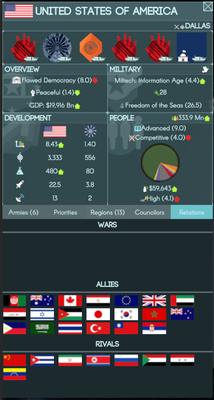
This is a fairly straightforward system governing the relationships between nations. These are things the various factions can manipulate to their own ends, like creating an alliance of nations fighting the aliens, or fomenting war between two countries to weaken them both. Early in the game, nations will sometimes engage in new alliances or conflicts on their own, as we want to make sure we’d have an interesting world even in the absence of an alien invasion.
Nations may be in one of four states with each other: Allied, at peace, rivals, or at war. These states are general set by the national executives (the faction controlling the highest-numbered control point). In some cases, such as forming alliances or ending a war, status changes require consent of both nations. Only rivals may go to war with each other. Allies defend each other if attacked; they are not required to participate in an offensive war.
Wars can accomplish two changes: a change in government, and/or change in territory. In the first case, one nation invades another, seizes its capital, and creates a friendly government there – “friendly” in this case, means both an alliance and a similar set of control points, so if a Resistance-controlled nation successfully invades an Initiative-controlled nation and captures its capital, the losing nation also becomes a Resistance-controlled nation.
Wars may lead to exchanges in territory if one nation has a claim on the territory of the other. Some claims are in place in the beginning of the game, while others are unlocked with certain social science projects (which occur through the research process, to be detailed later). Except for the aliens, current design is that territorial claims are fairly hard to come by, so you’re not going to be able to paint the world map with some super-nation. It’s through your faction you’ll gain that kind of control.
Non-existent nations with claims on territory may sometimes secede (violently or peacefully) and form new nations. Two allied nations with regional claims may peacefully federate into a larger nation.
Some examples: At the campaign’s start, Europe exists as a single nation, the European Union. Non-existent nations like Germany and Italy have claims on their respective regions in Europe; if conditions are correct, they will secede and become Germany and Italy, with their own set of control points and national assets to control.
Later in the campaign, you may finish a social science project, the South American Union. This grants a bunch of claims that enable the nations of South America to federate to a superpower-sized nation (or for the nation with the capital to try to seize other nations forcefully) if all the other conditions for such an event are met. They'll have a claim on French Guiana, which knowledgeable folks may recognize as having significant strategic importance in the context of the game. We’ve got a few dozen speculative nations, big and small, that can occur in a campaign.
Probably worth noting two things we’re not modeling as distinct systems are trade and migration. (Population changes are influenced by various factors that extend beyond birthrates, though, so migration is somewhat subsumed there.)
Internal Politics and Priorities:
Nations part 1 covered all the various stats that describe a nation and sets up various behaviors, events and mechanisms for control. Once you’ve got some control, you can set its course via Priorities.
The priorities system lets you distribute a portion of a nation’s fungible economic surplus to one or more costly (and usually repeatable) projects. These change the nation as a whole; so your faction as well as others with control points all gain/lose based on how each faction’s priorities are set.
Specifically, the process works like this (this gets a little wonky, but the player’s role is pretty straightforward: tell the nation what you want it to focus on):
GDP determines # of investment points, which are then reduced based on how high unrest is in a nation, and how many armies the nation has. The remainder is divided equally among the control points.
Example: The United States begins the campaign with a GDP (PPP) of almost $20 trillion and an unrest of 1.5 (criminality). The base number of investment points is the fourth root of the GDP in billions, so that’s a baseline of 11.87 investment points per month. Unrest reduces that by 5% (unrest – 1 / 10) to 11.2 and the USA’s six armies by 0.5 each to 8.2. The owner of each of the six control points gets 1/6 of that to distribute, so 1.36 IPs per month.
IPs are distributed by weighting each of the eligible Priorities with a value of 0, 1, 2, or 3. The weights are then totaled up daily and fractional IPs are put in each of the priorities according to weight. So if you have a setting of 3 in UNITY and a setting of 1 in BOOST, 75% of your IPs for that control point are going to Unity and 25% are going to do building rocket launch facilities, and the rest are getting nothing. Investment for a particular priority is totaled across all factions, so if someone else is also building BOOST, the new facilities will go up sooner, increasing the nation’s boost income, which is then distributed back across all the controlling factions.
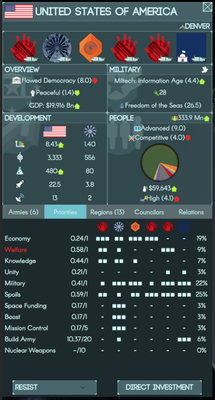
(This image is from our UI in testing, but we haven’t done the artwork for the priority buttons yet, so the squares you are looking are placeholders unless we run out of money, then they are exactly what we intended all along
 I'm including it here because I think it makes the system clearer than a text description alone) .
I'm including it here because I think it makes the system clearer than a text description alone) .
(And rest assured the game isn't all spreadsheet-y looking things like this. Just not ready to unveil our rad spaceships, character art or master map yet)
Each priority requires accumulating a certain number of Investment Points before it triggers changes to the nation. This is usually one, but expensive stuff like building a navy costs more.
The intent here is that you address this occasionally in nations, giving them general direction and letting them develop over time toward what’s most useful to your goals. We’ve made a bunch of presets that we think correspond with various political, economic and faction ideologies and policy sets, so you can use a dropdown to set all your priorities at once. This is where you can select things like “Libertarian,” “Industrialization” or “Reactionary.”
The specific priorities are:
• ECONOMY: This represents investments in industry and growth. It increases the per-capita GDP of the nation by a decent amount, and inequality and environmental damage by a little.
• WELFARE: This represents human and social services, wealth redistribution via taxation and policy efforts, and environmental regulation and cleanup. It decreases inequality and environmental damage in the nation. (I’m chewing on a different name for this priority because of the connotations this term carries in the United States, but haven’t come up with one. Perhaps “Well-being” or something like that.
• KNOWLEDGE: This represents support for education and the free flow of information. It increases education and democracy in the nation (which in turn increase scientific output).
• UNITY: This represents efforts to unite the people against a common foe, at the loss of some civil protections for dissenters. It increases cohesion, decreases democracy, and shift public opinion toward factions with control points. This priority is less effective in nation’s with higher education levels.
• MILITARY: This represents investments in internal security and military technology. It lowers unrest; if unrest is already low the nation’s military technology score increases.
• SPOILS: This represents the direct extraction of wealth from an economy, often accomplished by avoiding paying the true costs of obtaining it. This covers such behaviors as crime and corruption, regulatory capture and tax avoidance, economic rents, unmitigated pollution and exploitation of labor. It grants a lot of money and significantly increases inequality and environmental damage in the nation, and lowers democracy. In addition, any nation that devotes insufficient resources to the SPOILS priority will have dissatisfied elites and is thus more likely to undergo a coup d’etat. “Sufficent” here is defined by the nation’s education and democracy levels, with higher scores in both reducing the portion of the economy that must be directed to elites.
• SPACE DEVELOPMENT: The Space Funding priority directs national resources into legitimate government and private efforts to support a space program. While not as profitable as the SPOILS priority, it does no harm to the nation. Completing this priority increases the nation's annual space funding, which is distributed to factions with control points here.
• SPACEFLIGHT PROGRAM: This one-time priority, for nations that do not have a domestic spaceflight program at the campaign's start, will unlock the BOOST and MISSION CONTROL priorities once completed.
• MISSION CONTROL: Completing this priority grants one Mission Control to the nation. New facilities will tend to go in regions that already have Mission Control facilities.
• BOOST: The Boost priority covers the construction of launch facilities for rockets and other surface-to-orbit craft. New facilities will tend to go in regions that are closer to the equator or already have launch facilities. The amount of boost created increases with proximity to Earth’s equator, with a maximum increase of two tons per year each time the priority is fully funded.
• BUILD ARMY: The Build Army priority will create a new Army in the nation. Nations may build one Army per region.
• BUILD NAVY: The Build Navy priority will add a Navy to an Army, allowing it to cross oceans.
• INITIATE NUCLEAR PROGRAM: This priority will add one nuclear barrage to the nation's stockpile. Nations without nuclear weapons require more investment to make their first one, and building the first one does some environmental damage (from testing).
• BUILD NUCLEAR WEAPON: This priority will add one nuclear barrage to the nation's stockpile.
• SPACE DEFENSES: This priority is unlocked later in the campaign. It constructs a surface-to-orbit weapons array in one region, which will protect it from certain threats from space.
Next up (I think) will be delving into your councilors and how they work.
International Relations:
This is a fairly straightforward system governing the relationships between nations. These are things the various factions can manipulate to their own ends, like creating an alliance of nations fighting the aliens, or fomenting war between two countries to weaken them both. Early in the game, nations will sometimes engage in new alliances or conflicts on their own, as we want to make sure we’d have an interesting world even in the absence of an alien invasion.
Nations may be in one of four states with each other: Allied, at peace, rivals, or at war. These states are general set by the national executives (the faction controlling the highest-numbered control point). In some cases, such as forming alliances or ending a war, status changes require consent of both nations. Only rivals may go to war with each other. Allies defend each other if attacked; they are not required to participate in an offensive war.
Wars can accomplish two changes: a change in government, and/or change in territory. In the first case, one nation invades another, seizes its capital, and creates a friendly government there – “friendly” in this case, means both an alliance and a similar set of control points, so if a Resistance-controlled nation successfully invades an Initiative-controlled nation and captures its capital, the losing nation also becomes a Resistance-controlled nation.
Wars may lead to exchanges in territory if one nation has a claim on the territory of the other. Some claims are in place in the beginning of the game, while others are unlocked with certain social science projects (which occur through the research process, to be detailed later). Except for the aliens, current design is that territorial claims are fairly hard to come by, so you’re not going to be able to paint the world map with some super-nation. It’s through your faction you’ll gain that kind of control.
Non-existent nations with claims on territory may sometimes secede (violently or peacefully) and form new nations. Two allied nations with regional claims may peacefully federate into a larger nation.
Some examples: At the campaign’s start, Europe exists as a single nation, the European Union. Non-existent nations like Germany and Italy have claims on their respective regions in Europe; if conditions are correct, they will secede and become Germany and Italy, with their own set of control points and national assets to control.
Later in the campaign, you may finish a social science project, the South American Union. This grants a bunch of claims that enable the nations of South America to federate to a superpower-sized nation (or for the nation with the capital to try to seize other nations forcefully) if all the other conditions for such an event are met. They'll have a claim on French Guiana, which knowledgeable folks may recognize as having significant strategic importance in the context of the game. We’ve got a few dozen speculative nations, big and small, that can occur in a campaign.
Probably worth noting two things we’re not modeling as distinct systems are trade and migration. (Population changes are influenced by various factors that extend beyond birthrates, though, so migration is somewhat subsumed there.)
Internal Politics and Priorities:
Nations part 1 covered all the various stats that describe a nation and sets up various behaviors, events and mechanisms for control. Once you’ve got some control, you can set its course via Priorities.
The priorities system lets you distribute a portion of a nation’s fungible economic surplus to one or more costly (and usually repeatable) projects. These change the nation as a whole; so your faction as well as others with control points all gain/lose based on how each faction’s priorities are set.
Specifically, the process works like this (this gets a little wonky, but the player’s role is pretty straightforward: tell the nation what you want it to focus on):
GDP determines # of investment points, which are then reduced based on how high unrest is in a nation, and how many armies the nation has. The remainder is divided equally among the control points.
Example: The United States begins the campaign with a GDP (PPP) of almost $20 trillion and an unrest of 1.5 (criminality). The base number of investment points is the fourth root of the GDP in billions, so that’s a baseline of 11.87 investment points per month. Unrest reduces that by 5% (unrest – 1 / 10) to 11.2 and the USA’s six armies by 0.5 each to 8.2. The owner of each of the six control points gets 1/6 of that to distribute, so 1.36 IPs per month.
IPs are distributed by weighting each of the eligible Priorities with a value of 0, 1, 2, or 3. The weights are then totaled up daily and fractional IPs are put in each of the priorities according to weight. So if you have a setting of 3 in UNITY and a setting of 1 in BOOST, 75% of your IPs for that control point are going to Unity and 25% are going to do building rocket launch facilities, and the rest are getting nothing. Investment for a particular priority is totaled across all factions, so if someone else is also building BOOST, the new facilities will go up sooner, increasing the nation’s boost income, which is then distributed back across all the controlling factions.
(This image is from our UI in testing, but we haven’t done the artwork for the priority buttons yet, so the squares you are looking are placeholders unless we run out of money, then they are exactly what we intended all along
(And rest assured the game isn't all spreadsheet-y looking things like this. Just not ready to unveil our rad spaceships, character art or master map yet)
Each priority requires accumulating a certain number of Investment Points before it triggers changes to the nation. This is usually one, but expensive stuff like building a navy costs more.
The intent here is that you address this occasionally in nations, giving them general direction and letting them develop over time toward what’s most useful to your goals. We’ve made a bunch of presets that we think correspond with various political, economic and faction ideologies and policy sets, so you can use a dropdown to set all your priorities at once. This is where you can select things like “Libertarian,” “Industrialization” or “Reactionary.”
The specific priorities are:
• ECONOMY: This represents investments in industry and growth. It increases the per-capita GDP of the nation by a decent amount, and inequality and environmental damage by a little.
• WELFARE: This represents human and social services, wealth redistribution via taxation and policy efforts, and environmental regulation and cleanup. It decreases inequality and environmental damage in the nation. (I’m chewing on a different name for this priority because of the connotations this term carries in the United States, but haven’t come up with one. Perhaps “Well-being” or something like that.
• KNOWLEDGE: This represents support for education and the free flow of information. It increases education and democracy in the nation (which in turn increase scientific output).
• UNITY: This represents efforts to unite the people against a common foe, at the loss of some civil protections for dissenters. It increases cohesion, decreases democracy, and shift public opinion toward factions with control points. This priority is less effective in nation’s with higher education levels.
• MILITARY: This represents investments in internal security and military technology. It lowers unrest; if unrest is already low the nation’s military technology score increases.
• SPOILS: This represents the direct extraction of wealth from an economy, often accomplished by avoiding paying the true costs of obtaining it. This covers such behaviors as crime and corruption, regulatory capture and tax avoidance, economic rents, unmitigated pollution and exploitation of labor. It grants a lot of money and significantly increases inequality and environmental damage in the nation, and lowers democracy. In addition, any nation that devotes insufficient resources to the SPOILS priority will have dissatisfied elites and is thus more likely to undergo a coup d’etat. “Sufficent” here is defined by the nation’s education and democracy levels, with higher scores in both reducing the portion of the economy that must be directed to elites.
• SPACE DEVELOPMENT: The Space Funding priority directs national resources into legitimate government and private efforts to support a space program. While not as profitable as the SPOILS priority, it does no harm to the nation. Completing this priority increases the nation's annual space funding, which is distributed to factions with control points here.
• SPACEFLIGHT PROGRAM: This one-time priority, for nations that do not have a domestic spaceflight program at the campaign's start, will unlock the BOOST and MISSION CONTROL priorities once completed.
• MISSION CONTROL: Completing this priority grants one Mission Control to the nation. New facilities will tend to go in regions that already have Mission Control facilities.
• BOOST: The Boost priority covers the construction of launch facilities for rockets and other surface-to-orbit craft. New facilities will tend to go in regions that are closer to the equator or already have launch facilities. The amount of boost created increases with proximity to Earth’s equator, with a maximum increase of two tons per year each time the priority is fully funded.
• BUILD ARMY: The Build Army priority will create a new Army in the nation. Nations may build one Army per region.
• BUILD NAVY: The Build Navy priority will add a Navy to an Army, allowing it to cross oceans.
• INITIATE NUCLEAR PROGRAM: This priority will add one nuclear barrage to the nation's stockpile. Nations without nuclear weapons require more investment to make their first one, and building the first one does some environmental damage (from testing).
• BUILD NUCLEAR WEAPON: This priority will add one nuclear barrage to the nation's stockpile.
• SPACE DEFENSES: This priority is unlocked later in the campaign. It constructs a surface-to-orbit weapons array in one region, which will protect it from certain threats from space.
Next up (I think) will be delving into your councilors and how they work.
I must say I do like the different factions. If they implement that right, I can see a lot of replayability in it.
Space Satan
Arcane

We haven't seen a single gameplay video, even of pre-alpha stage. This game could turn out to be a mobile-like happy farm where you collect prizes from governments and popamole-click on alien activities
- Joined
- Nov 4, 2007
- Messages
- 14,797
https://www.oneangrygamer.net/2019/10/long-war-creators-reveal-terra-invicta/94976/
Pavonis Interactive creators of the much beloved and almost necessary Long War mods have finally broken radio silence to reveal their upcoming grand strategy game, Terra Invicta. A game where you will have to unify humanity, explore the solar system while exploiting it for resources and positions of power, and gunning to stop an ever-growing alien threat.
Unlike other series (both cinematic or in video games) the alien threat doesn’t appears to be an ultra advanced civilization looking at Earth and the surrounding systems as their latest acquisition (and yet somehow struggles to defeat a relatively primitive race marooned on only one planet in the system). The alien threat this time around appears to be a race only slightly more advanced technologically than where we find ourselves in game.
This alien threat will have to utilize resources it gathers from the solar system and perhaps beyond as it lays siege against humanity.
You play as the head of the resistance, an organization with the express goal of saving humanity from the alien invasion. As you build your council of scientists, spies, and leaders you will have to contend with eight factions that have arisen out of the arrival of the alien threat. Each faction features it’s own unique ideology that drives their goals and agenda. How you will have to contend with these factions hasn’t been revealed yet, but the depth of the system on display suggests it will be beyond the simplistic diplomacy featured in other games.
Across the solar system you will complete with these factions and the aliens for resources to build your own armada to defend humanity. To accomplish this, the game allows the building of custom bases, space stations and even designing of your own ships.
Pavonis is looking to deliver one of the most in-depth simulation titles the grand strategy genre has seen in a long time. More details are to come soon as the developers gear up for their impending Kickstarter campaign. We’ll keep you informed as more information surfaces and hopefully this won’t fall victim to Epic.
not an artichoke
Cipher
- Joined
- Aug 21, 2010
- Messages
- 272
Disagree. Exploring "what if" scenarios in a plausible setting makes the game more interesting. Over the top comic book silliness is for kids.
LESS T_T
Arcane
- Joined
- Oct 5, 2012
- Messages
- 13,582
![The Year of Incline [2014] Codex 2014](/forums/smiles/campaign_tags/campaign_incline2014.png)
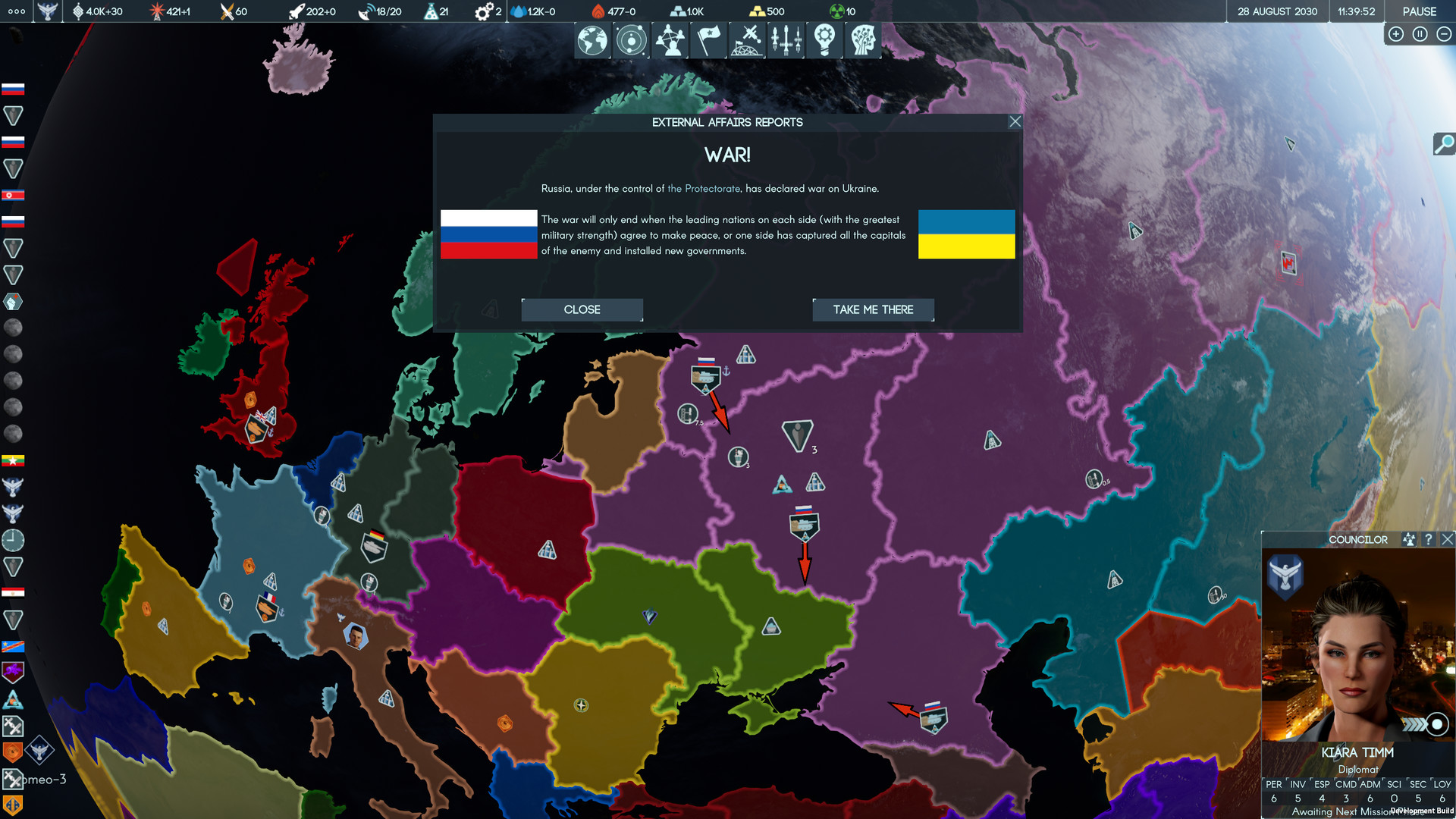
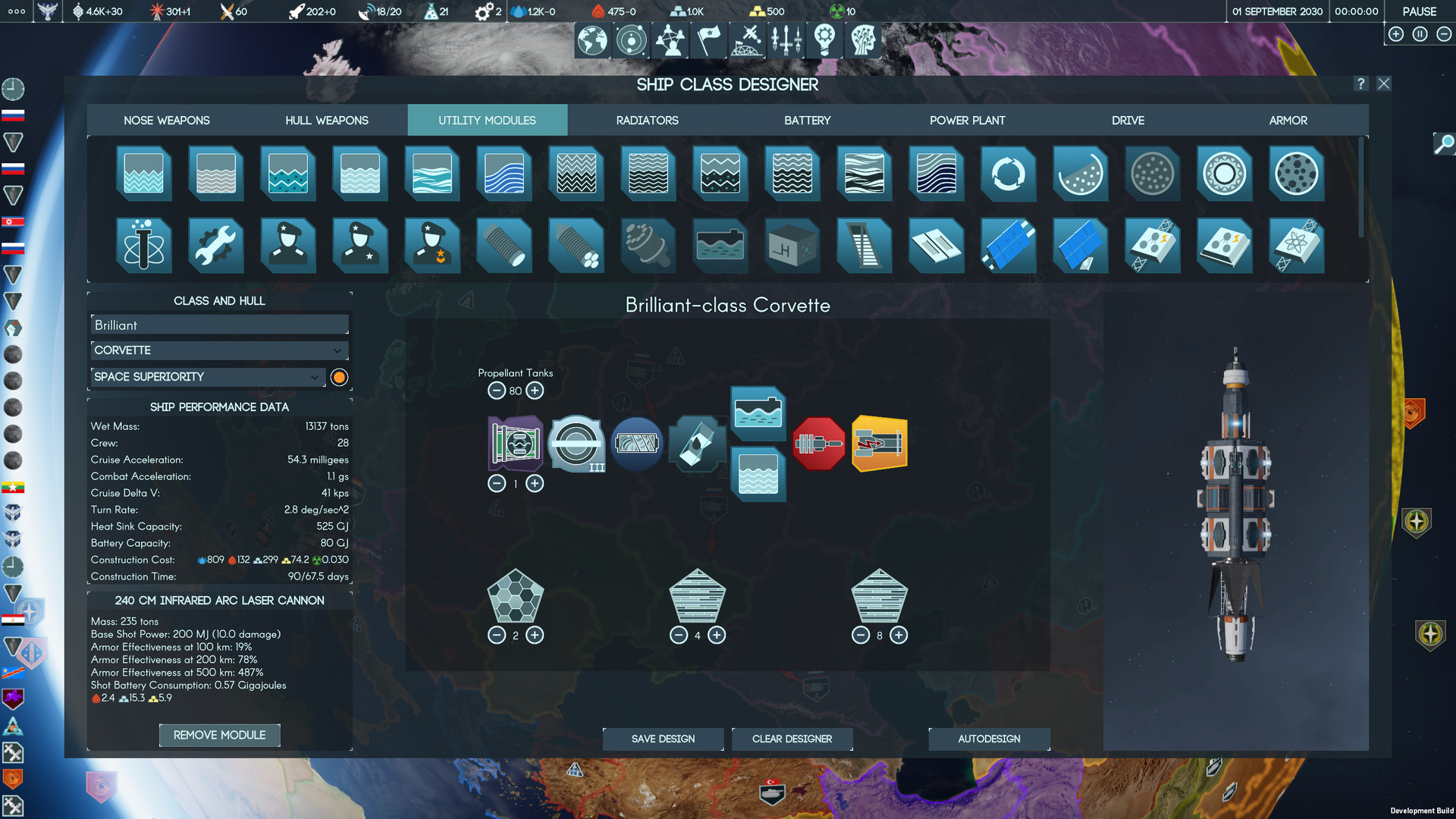
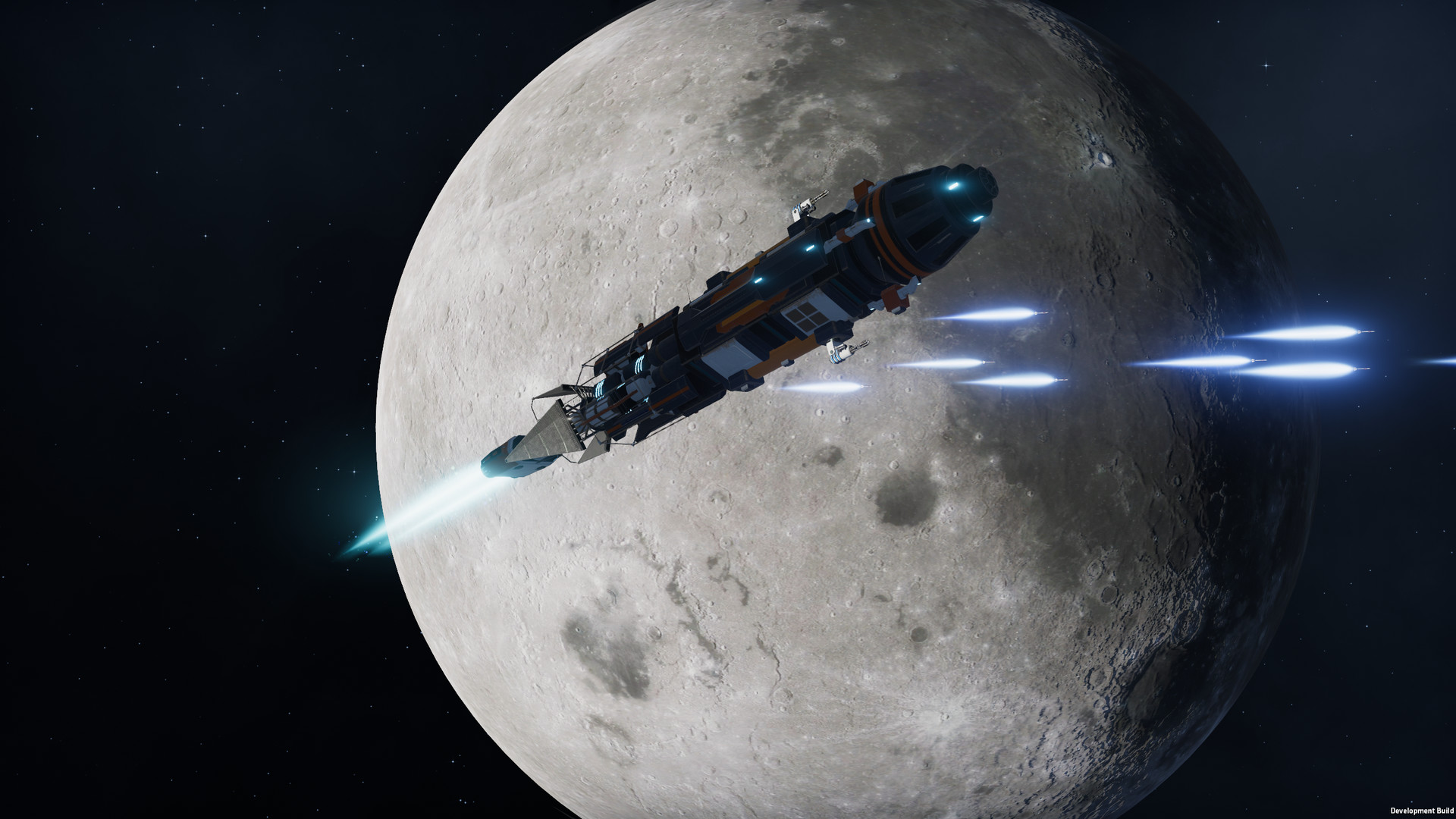
An extraterrestrial probe is detected approaching present-day Earth. Unknown to humanity, an alien force has arrived in the far reaches of the icy Kuiper Belt and has begun mining a dwarf planet to prepare for an invasion. Its first ships carry infiltrators who will subvert Earth’s governments to prevent them from mounting a joint defense against the impending attack.
With Earth’s nations unable to form a coherent plan to address the alien arrival, transnational groups of like-minded political, military and scientific leaders develop covert channels to coordinate a response. With the aliens' motives uncertain, factions emerge, driven by hope, fear or greed.
One group, calling itself the Resistance, calls for vigilance. You will control that faction.
FEATURES
GAMEPLAY
- LEAD a council of politicians, scientists and operatives who can bring Earth's nations together to defeat the alien invasion
- INFLUENCE world affairs and shape a living model of modern geopolitics with the goal of building up Earth's defenses both on the surface and in space
- INDUSTRIALIZE space by constructing space stations and asteroid mining colonies, while developing technologies taken from NASA's drawing boards
- EXPLORE a massive and accurate model of our Solar System, which serves as a dynamic strategic map in which the game's factions must compete for resources
- BUILD a space fleet able to defend Earth from alien infiltration craft and battleships
- COMMAND interplanetary warships against both the aliens and hostile humans within an environment that obeys Newton's laws, where maneuver and momentum are your keys to victory
Terra Invicta is a grand strategy and management sim. The core experience will be familiar to players of other grand strategy and 4X games: You will give orders to your assets – councilors, Earth nations and armies, space habitats, and space fleets – and run time forward while those orders are executed. You will also manage scarce resources to upgrade your agents, build your offworld industrial base, and design and construct ships.
Terra Invicta also features a separate space combat layer, in which fleets of Earth and alien warships will fight in a real-time pausable environment. Players will give movement and fire orders in battles that emphasize planning, maneuver and positioning.
- Joined
- Feb 4, 2020
- Messages
- 1,256

I'd very much like to see what phone games you've been playing.Looks like a phone game.
Space Satan
Arcane

The game looks shittier by the year
- Joined
- Aug 5, 2009
- Messages
- 9,881




It's almost funded.
The first long war mod was equal parts firaxcom, autism and concentrated x-com awesomeness.
Long war 2 was kinda bad.
This looks a bit heavy on the autism, the screen showing all the stats for a single nation feels like it's already at a grand strategy level, and it's not even the primary gameplay focus. Turn based newtonian space combat could be neat though.








![Glory to Codexia! [2012] Codex 2012](/forums/smiles/campaign_tags/campaign_slushfund2012.png)














